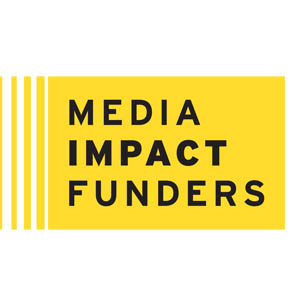
Journalists are on the frontlines reporting on what citizens need to know to be safe during the COVID-19 pandemic. Quality news at the local level has never been more important, but newsroom operations around the country are teetering on the brink of collapse in this new economic reality.
This week, we hosted a discussion for funders to hear from journalists out in the field, to ask questions, and share ideas. As we determine next steps for moving this critical work forward, MIF Executive Director Vince Stehle—in his latest column for the Chronicle of Philanthropy—also stresses the importance of taking stock of the philanthropic investments in local news that are paying off now, at a time when Americans need accurate, quality information the most.
The first half of the discussion featured remarks from Samantha Pak, Senior Editor for Sound Publishing’s Eastside publications in Washington, and Elisabeth Rosenthal, Editor-in-Chief of Kaiser Health News (KHN), who spoke about the challenges their newsrooms are facing.
“I was on the ground when the outbreak hit in Washington,” said Pak, who offered a local perspective as she described the struggles of her newsroom outside of Seattle. “Business are closing and the last thing they want to do is buy an ad. One of our higher-ups said this is one of those times when we are most valuable to our audience but we can’t afford to pay the bills. We’ve been canceling the water, talking to our landlords, figuring out ways to keep the doors open.”
Rosenthal talked about how KHN —a national newsroom whose model is to partner with many regional organizations around the country—has had to shift strategies and thinking to respond to COVID-19. “We want to distribute the news to people who aren’t getting good COVID-19 news,” Rosenthal said. “Normally, we pitch our stuff to the big news outlets. But now we feel that it may be even more important to get into news deserts. So, we’ve done a lot more with nontraditional and local partners.”
The second half of the discussion provided funders with the opportunity to hear about rapid-response grant opportunities and possibilities for collaboration.
A few highlights:
- Dorrine Mendoza, Strategic Partner Development at Facebook, shared details about the new $1 million grant supported by the Facebook Journalism Project, the Lenfest Institute for Journalism, and the Local Media Association to support U.S. and Canadian local news organizations covering the coronavirus. See the first round of grantees here. A complete list of winners will be announced in early April.
- The National Geographic Society, one of the largest funders of individual journalists, has launched a global emergency fund for journalists. Kaitlin Yarnall, Grants will be $1,000-$8,000. The fund will place particular emphasis on delivering news to underserved populations, and will focus on local and hyperlocal stories.
- The International Women’s Media Foundation has launched the Journalism Relief Fund. “There’s been an increase in dependence on freelance journalists in the last decade,” said Elisa Lees Muñoz, Executive Director, International Women’s Media Foundation. “Those are the people who are most hurting. And I’m not sure if all of these people will come out on the other end as journalists.”
Funders: Please let us know if you’d like more information about these funds, or if you’d like to learn more about what your peers are doing to support journalists during this time and how you can get involved. Email us at info@mediafunders.org
